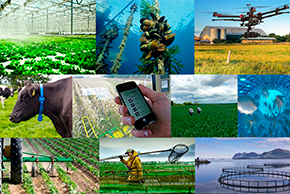Overview Article
Cao Hongxin, Ge Daokuo, Zhang Wenyu, Zhang Weixin, Cao Jing, Liang Wanjie, Xuan Shouli, Liu Yan, Wu Qian, Sun Chuanliang, Zhang Lingling, Xia Ji‘an, Liu Yongxia, Chen Yuli, Yue Yanbin, Zhang Zhiyou, Wan Qian, Pan Yue, Han Xujie, Wu Fei
Agricultural models, agricultural artificial intelligent, and data analysis technology, etc., exist in whole processes of information perceiving, transmission, processing and control for smart agriculture, thus they are the core technology of smart agriculture. To furtherly make the substances and functions of agricultural models clear, facilitate its further research and application, drive smart agriculture development with healthy, steady, and sustainable, methods of systematic analysis, comparison, and chart for relationship, etc. were used in this research. The definition, classification, functions of the agricultural models were theoretically analyzed. The relationships between the agricultural models and the elements and processes of the smart agriculture were expounded, which made the functions of agricultural models clear, provided some agricultural models examples applied in the smart agriculture. The important studies and application progresses of agricultural models were reviewed. The comparison results of agricultural models showed that the 4 levels of agricultural biological elements, 6 scales of agricultural environmental elements, 6 administrative levels of agricultural technological and economic elements, and the relevant approaches for modeling agricultural system need to be considered. The research and application of multi-space scales on environment elements in the agricultural models would have the larger potential. The combination of agricultural models with molecular genetics, perceiving, and artificial intelligence, the collaboration among public and private researchers, and food security challenges have been an important power for further development of agricultural models, linking agricultural models with various agricultural system modeling, databases, harmonious and open data, and decision-making support systems (DSS) would be focus on. The research and application of the agricultural models in China have formed crop model series with Chinese characteristics, joined in the world trends of the Agricultural Model Intercomparison and Improvement Project (AgMIP), the smart agriculture, and so on. They should be speedy graspe chances and accelerate development. The agricultural models is a quantitative express of relationships within or among the agricultural system elements. An important method with epistemological values of quantifying and synthesizing agricultural sciences, and will play an indispensible role in data achieving and processing for the smart agriculture combining perceiving techniques, and become a significant bridge and bond.
